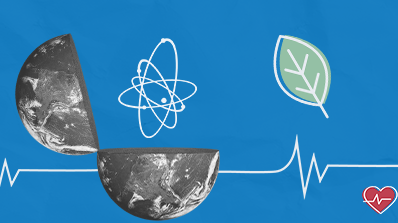The Summit of the Future is a high-level global event, held in September at the United Nations headquarters in New York, to bring world leaders together to forge a new international consensus on how to deliver a better present and safeguard the future.
Register to attend the event in person following registration to the Summit of the Future Action Days here.
Side event at the Summit of the Future: Atoms for SDGs
This side event will focus on the role of the atom in science, technology and innovation to tackle the current impacts of climate change and the exacerbated challenges on healthcare, as well as to anticipate and address future challenges.
An additional focus will be on the thematic areas of the SDGs impacted by climate change, including food security (SDG 2), good health (SDG 3), access to water (SDG 6), energy (SDG 7), and ocean health (SDG 14).
Date and time
Saturday, 21 September 2024 at 09:45-11:00 (EST), 15:45-17:00 (CEST)
Location: CR1 at United Nations Headquarters, New York
Context
The world is undergoing unprecedented global challenges affecting people’s health, well-being, livelihoods, and socioeconomic prosperity.
Climate change is expected to lead to an average global temperature increase, more frequent heat waves, and a geographical shift of climatic zones. Droughts will become more frequent, longer, and more severe. A hotter climate will also influence the availability and quality of fresh water. Taken together, the consequences of climate change are bringing about broad and deep social and economic consequences, impacting the lives and livelihoods of billions of people.
Climate change is furthermore exacerbating social and economic disparities and affecting access to life-saving healthcare to address non-communicable diseases such as cancer, among other existential challenges.
In middle-income countries, fewer than 60 per cent of cancer patients have access to radiotherapy, required for every second cancer patient, and in low-income countries, only one in ten people has access to this life-saving treatment. By 2040, annual cancer cases alone in Africa are expected to double, with death rates exceeding the global average by almost a third.
According to the Lancet Oncology Commission Report, a comprehensive scale-up of imaging, treatment, and care would avert 9.55 million (12.5%) of all cancer deaths, saving 232.30 million life-years. Unfortunately, today, almost 30 countries globally still have no access to radiotherapy – and an additional 20 countries have very limited access.
These circumstances are placing increasing pressure on countries to find long-term solutions to address these unfolding challenges and support equitable and sustainable development.
Science and technology help us understand and overcome many of the global challenges the world community faces, including those related to cancer care and other non-communicable diseases and climate change and its consequences, including food insecurity, water scarcity, disease outbreaks and ocean acidification.
Nuclear science and technology are unique in the scale and breadth of their applications. Human ingenuity has unlocked the power of the atom to bring us many benefits, including to deliver reliable and dispatchable low-carbon energy, to fight diseases such as cancer, to study scarce food and water resources, to develop hardier crops, and to monitor pollution.
View the IAEA event page here: Summit of the Future Side Event – Atoms for SDGs | IAEA
View the Summit of the Future page here: Summit of the Future website – United Nations | United Nations
View the event recording here: Atoms for SDGs (Side Event, Action Day 2, Summit of the Future) | UN Web TV.


